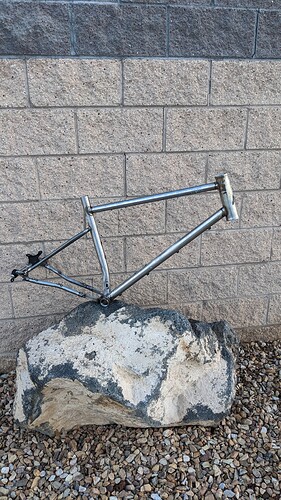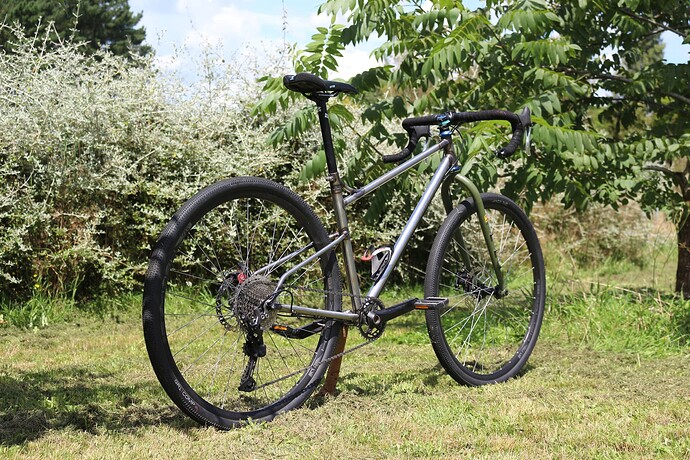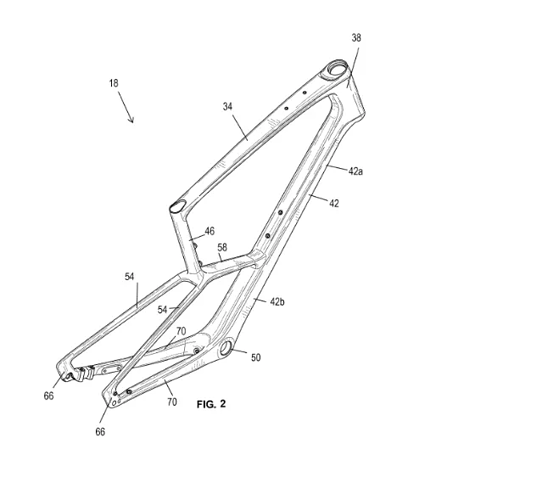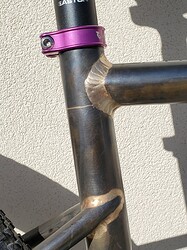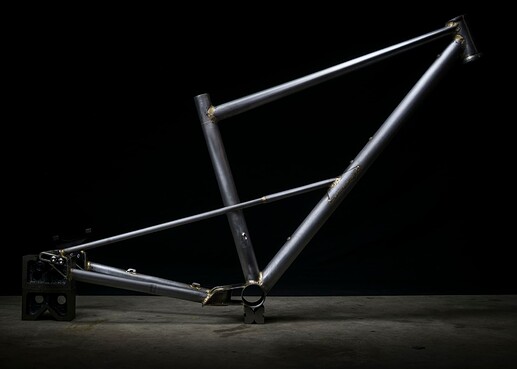I’ve been dreaming up a gravel bike and I love the idea of using dropped seat stays for the extra compliance but I am unsure of how these are typically made. I can think of 3 ways to accomplish it:
- Straight gauge ST with typical miters to the SS.
- second tube collar welded in or extra long tube collar.
- 3D printed or fabricated flange to add material (potential for stress risers?)
Anyone care to share their experiences and knowledge?
Cheers!
I’ll start off by stating I am not a big fan of dropped seat stays purely from an aesthetic standpoint. Too disruptive to the lines of a bike for me.
That said, when engineered well can give some flex to the rear end. That’s where I see issues for a lot of us smaller builders. Without sitting down and running it through a modell and FEA and then a couple test platforms that get thrashed, how do you know how much material to put in there.
From experience and feel I could have a crack at it but I’d always be erring on the side of caution and over building , which then negates the reason for going for a dropped stay.
It’s a huge shear arrangment between the TT and SS which is born by the ST. The opportunity for cracking at some point is high.
Too answer your questions though, I would locally thickening the seat tube where the stays land as a minimum and use a heavier seat tube. Ensure your TT/ST joint is done to perfection as cracking at the toe of the weld on the TT top side will be a potential problem area, as this will be subjected to lots of tension when the rear end is loaded.
Also make sure you seat post extends below the stay location.
That’s my take on it though. It’s quite a complex setup with lots going on.
3 Likes
I just finished up a gravel frame for myself with dropped stays as an experiment. I used a 1.6/0.9 35mm seat tube and the stays land in the 0.9mm section. Which is usually the thicker section on other tubes on the bike and what most straight Guage tubing is that people use (~0.035")
Long term effects are to be seen but I’m not too worried about it.
3 Likes
I did the same, except the tubing is 31.8x0.9 straight gauge and I made a topper to fit a 27.2mm seatpost. I’m leaving the frame raw so should be easy to spot any cracks if they start forming. If they do I will probably just weld them up with a bit of extra reinforcing and hope that it lasts until I can make a mk2 version.
2 Likes
I feel like @WHilgenberg probably knows the most about dropping stays! Check out some engineering work he did over at his site.
I did some slightly (like 120mm from top of ST) dropped stays on a buddy’s tracklocross frame. I silver brazed a 31.7 x 1.5mm reinforcement where they met the seat tube. We’ll see how it holds up 
2 Likes
Those all look great! somewhat on topic, I just found this apparent Specialized patent:
Dropped stays with a strut!
Is this the future?
1 Like
Funnily enough after saying I don’t like the look of dropped stays I find that Spec one to look alright. LOL
2 Likes
Thanks for looping me into this conversation here @liberationfab
The short answer @BS_Industries is that it depends. 
Levity aside, your three suggestions are all very reasonable approaches to the problem and are all likely to be functional but it does depend on why you are wanting to drop the seatstays. On more “traditional” dropped stays, I typically run with option Number 1 (straight gauge ST with miters) as this is the simplest way to put it all together. On the subject of compliance though, it will get you some of the way but not all the way there.
Of note, the seattube shown here is 35mm OD with 0.035" wall tubing and 100mm of seat collar brazed into the top of it. You could probably reduce the OD slightly and be alright, but it would depend on the rider, the brazing, and the expected use.
When it comes to your other options, those will also work, but they will likely reduce the effect of the dropped stiffness on ride comfort, especially when adding a gusset. The biggest gain to compliance would likely be found in dropping the TT to expose more seatpost and to experiment with seatpost materials to find the one that gets you the feel that you want. Since there is no damping effect in your spring, getting the “springiness” right will be critical and is a balance that depends on rider weight and pedaling style.
My personal answer is to drop the stays very low, skip the seattube altogether, and tie to the downtube. There are downsides to this, but it all depends on what you are looking for in the ride and the ride quality with this layout is sublime. It just doesn’t play nice with frame bags or front derailleurs. . .
Hope this helps.
11 Likes
Trusses tend to not flex much.
If you want compliance make more seatpost stick out or run bigger/lower pressure tires.
Back on topic, if you want to drop the stays just make sure the seat tube is nice and beefy as others have said.
-Walt
3 Likes
